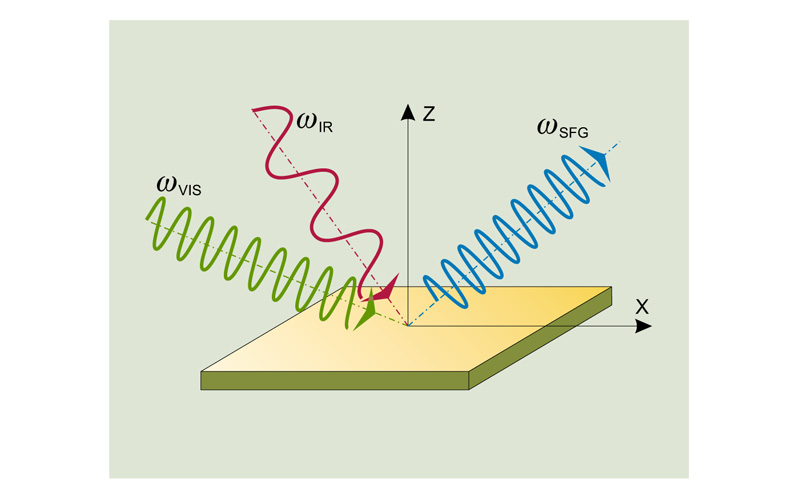 Principle of Sum Frequency Generation Vibrational Spectroscopy
Principle of Sum Frequency Generation Vibrational SpectroscopySum frequency generation vibrational spectroscopy (SFG-VS) is used to characterize vibrational bonds of molecules at surfaces or interfaces. SFG spectroscopy is particularly attractive because of molecular specificity and intrinsic interfacial sensitivity. Surface sensitivity of the technique arises from the fact that within the electric dipole approximation the nonlinear generation of the sum-frequency (SF) signal from the overlapped visible and infrared beams is forbidden in the media of randomly oriented molecules or in the centrosymmetric media but is allowed at the interface where inversion symmetry is broken. Molecular specificity emerges from the ability to record vibrational spectrum.
In SFG-VS measurements, carried out by employing SFG spectromer, a pulsed tunable infrared IR (ωIR) laser beam is mixed with a visible VIS (ωVIS) beam to produce an output at the sum frequency (ωSFG = ωIR + ωVIS). SFG signal is generated in visible spectral range, so it can be efficiently measured using sensitive detectors (PMT or CCD).
